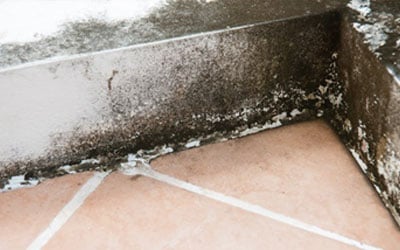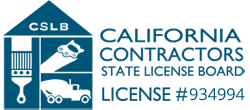
Mold in commercial buildings can cause serious problems. It can affect the health of employees, clients, and visitors and damage the structure. If left unchecked, mold spreads quickly and becomes difficult and expensive to control. Recognizing familiar sources of mold and taking quick action can help you protect your property and the people in it.
Identifying Common Sources of Mold in Commercial Buildings
Mold loves moisture, so it’s no surprise that the most common sources of mold in commercial buildings are areas with water issues. Leaky roofs are a significant culprit. When the roof has cracks or missing shingles, rainwater can seep in and create damp conditions perfect for mold growth. Inspecting roofs regularly, especially after storms, is vital to spot and repair any damage.
Bathrooms and kitchens are also hotspots for mold. These spaces often have high humidity due to showers, sinks, and cooking activities. Ensure they are well-ventilated and check for leaky pipes or faucets, which can create hidden wet areas under sinks or behind walls.
Basements and areas with poor ventilation are other familiar sources of mold. These places can stay damp and humid, providing an excellent environment for mold to thrive. Sometimes, HVAC systems can spread mold spores if not cleaned and maintained correctly. Moisture from condensate lines or units can lead to mold growth inside the ducts and spread throughout the building.
Identifying these areas early on can help you take preventive steps to address moisture issues and keep mold at bay. Regular inspections and maintenance checks are critical in catching and fixing water problems before mold can grow.
Effective Mold Removal Techniques and Equipment
Once mold is spotted, proper techniques and equipment are vital to effective removal. Start by containing the affected area to prevent mold spores from spreading to other building parts. Use plastic sheeting and tape to seal off doors, windows, and vents. This creates a controlled environment where you can safely work on removing the mold.
Use mold-specific cleaning solutions or a mixture of water and detergent for cleaning surfaces. Scrub the moldy areas thoroughly, but be careful not to spread spores. For larger infestations, consider using HEPA (High-Efficiency Particulate Air) vacuums. These vacuums are designed to capture tiny mold spores and help clean surfaces without redistributing them into the air.
In severe cases, you might need more specialized equipment, such as air scrubbers. Air scrubbers filter out mold spores, improving indoor air quality. Dehumidifiers are also essential, as they reduce moisture levels in the air, making it harder for mold to grow back.
After cleaning, it’s essential to dry the area thoroughly. Use fans and dehumidifiers to speed up the drying process. Moisture meters can help you check that all areas are thoroughly dry. Effectively removing mold is not just about cleaning what’s visible; it’s about ensuring the conditions that allow the mold to grow are addressed and fixed.
Following these techniques and using the right equipment ensures that mold is removed safely and thoroughly, creating a healthier environment for everyone in the building.
Ensuring Safety During Mold Remediation
Safety is a top priority during mold remediation. Mold spores can be harmful if inhaled, causing allergic reactions and respiratory problems. Proper protective gear, such as gloves, masks, and goggles, is crucial while working. This gear protects you from contact with mold and prevents inhaling spores.
Before starting, make sure the workspace is well-ventilated. Setting up fans to blow air out of the windows helps keep fresh air flowing and reduces the concentration of spores in the air. For larger projects, air scrubbers are essential. These machines filter out mold spores from the air, improving air quality and making the environment safer for everyone.
It’s also essential to remove any contaminated materials safely. Seal moldy items in plastic bags before disposing of them to prevent spreading spores. If the HVAC system might be infected, turn it off to avoid circulating spores throughout the building. Cleaning ducts and vents after the remediation process can prevent mold from spreading.
Monitor the health of those involved in the mold removal process regularly. Anyone showing signs of allergic reactions or respiratory issues should stop working and seek medical advice. Keeping safety as a priority ensures a thorough and risk-free mold remediation process.
Preventive Measures to Keep Mold from Returning
Preventing mold from returning starts with controlling moisture levels. Regular maintenance of plumbing and roofing systems helps prevent leaks. Address any leaks promptly to avoid creating ideal conditions for mold growth. Dehumidifiers keep indoor humidity levels below 60%, especially in damp areas.
Ventilation is another critical factor. Ensure that all areas, especially bathrooms and kitchens, are well-ventilated. Use exhaust fans to reduce humidity and improve airflow. Regularly clean and maintain HVAC systems to prevent mold spores from spreading through the ducts.
Regular inspections help catch mold issues early. Check for signs of mold growth in hidden areas like behind furniture, under carpeting, and inside crawl spaces. Conduct these checks in conjunction with other routine building maintenance.
Equipping the building with mold-resistant materials can also help. Use mold-resistant drywall, paint, and insulation in areas prone to moisture. These materials are designed to withstand damp conditions and reduce the likelihood of mold growth.
Implementing these preventive measures can create a mold-resistant environment, ensuring the safety and well-being of everyone in the building while reducing future remediation costs.
Conclusion
Mold in commercial buildings poses significant health risks and can cause extensive damage if not dealt with properly. Identifying familiar sources of mold, using effective removal techniques, and ensuring safety during remediation are all crucial steps in tackling the problem. Additionally, preventive measures can help keep mold from returning, providing everyone with a healthier and safer environment.
Handling mold issues quickly and efficiently doesn’t just protect the building but also the people who use it daily. With the right approach, commercial buildings can remain mold-free and safe.
If you need professional help with mold removal and prevention, Restoration Masters is here to assist. Our damage restoration service ensures that your building is thoroughly inspected, cleaned, and safeguarded against future mold issues. Contact Restoration Masters today to keep your commercial space healthy and mold-free.





